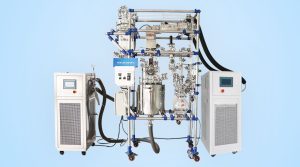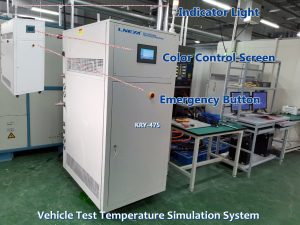화학 및 제약 생산 공정에서 온도 제어가 필요한 반응에는 어떤 것이 있나요?
Precise temperature control plays a crucial role in the reaction process during synthesis/crystallization in the production of chemical and pharmaceutical products. In the field of fine chemicals, many chemical reaction processes and crystallization processes are carried out in a low temperature environment. When the reaction is carried out in a low temperature environment, the amount of impurities produced is obviously reduced, and the purity of the product is increased, so that the reacted product has a high selectivity. Compared with the traditional process technology, a reasonable selection of the working temperature range can improve product quality and synthesis quality, improve production efficiency and reduce production costs. The premise of realizing all this is the control of the dynamic temperature in the reaction process. In the crystallization process of pure product, in order to obtain higher product quality, it is necessary to strictly follow the specified cooling rate.
Decarboxylation is a chemical reaction that removes a carboxyl group and releases carbon dioxide (CO2) and replaces it with hydrogen atoms. The term refers to the states of reactants and products. Decarboxylation is one of the oldest known organic reactions because it usually requires simple pyrolysis and distillation of volatile products from the reactor. Heating is required because the reaction is less favorable at low temperatures. Yield is highly sensitive to conditions. For example, the temperature required for the polar activated decarboxylation reaction method is as high as 140 °C.
Winterization is one of the methods of crystallization separation. It is to stir the oil slowly, control the cooling speed, and cool it to about 4~6 ℃. The solid fat is formed into larger crystals and separated out. Winterized oil is characterized by passing the freezing test, that is, it is not cloudy after 5.5 hours at 0 °C. Another example is that the whole process of enzyme extraction is kept at low temperature because enzymes are proteins. Proteins are denatured at high temperatures, thereby losing their activity. The temperature is too low, which is not conducive to the extraction operation. So careful temperature management in the processing plant not only ensures high extraction rates, but also efficient recovery of the solvent used. It is conceivable that temperature control plays a decisive role in the extraction process.
Our LNEYA temperature control system equipment can be used to accurately control temperature in small laboratory rotary evaporators to large factory pilot systems. Temperature control range -120℃~350℃, efficient production stability and repeatable results, refrigeration power from 0.5~1200kW. Superior performance, high precision plus or minus 0.1 ℃, high intelligent temperature control settings, 7-inch 10-inch color TFT touch screen graphic display.
관련 권장 사항
-
Which industries are applicable to semiconductor device testing?
1167Semiconductor device testing is used in many semiconductor industries. So, how much do you know about semiconductors and conductors for semiconductor device testing? The properties of this substance are still recommended to the user. In general, s...
세부 정보 보기 -
200L 결정화 용해 주전자 냉각 및 가열 시스템
883200L 결정화 용해 주전자 냉각 및 가열 시스템 응용 분야의 요구를 위해 이러한 유형의 장비는 일반적으로 화학 산업, 제약 분야의 결정화, 용해 및 기타 공정에 사용됩니다 ...
세부 정보 보기 -
중합 및 결합 반응에 에틸렌 글리콜 냉각기를 사용할 수 있는 이유
9311. Polymerization heatingGenerally, the raw materials ofpolymerization reaction are some flammable solvents, and heating up quickly maycause local temperature to be too high and cause accidents. Everypolymerization reaction has its proper react...
세부 정보 보기 -
차량 고온 및 고습 테스트 차량 노화 방지 성능 테스트
1084On test benches in the automotive industry, accurate temperature simulation is critical. From the time of the test, the air temperature in the test chamber has always been maintained at 45 ℃, which is equivalent to the hottest area of the Flaming...
세부 정보 보기
 LNEYA 산업용 냉각기 제조업체 공급 업체
LNEYA 산업용 냉각기 제조업체 공급 업체













